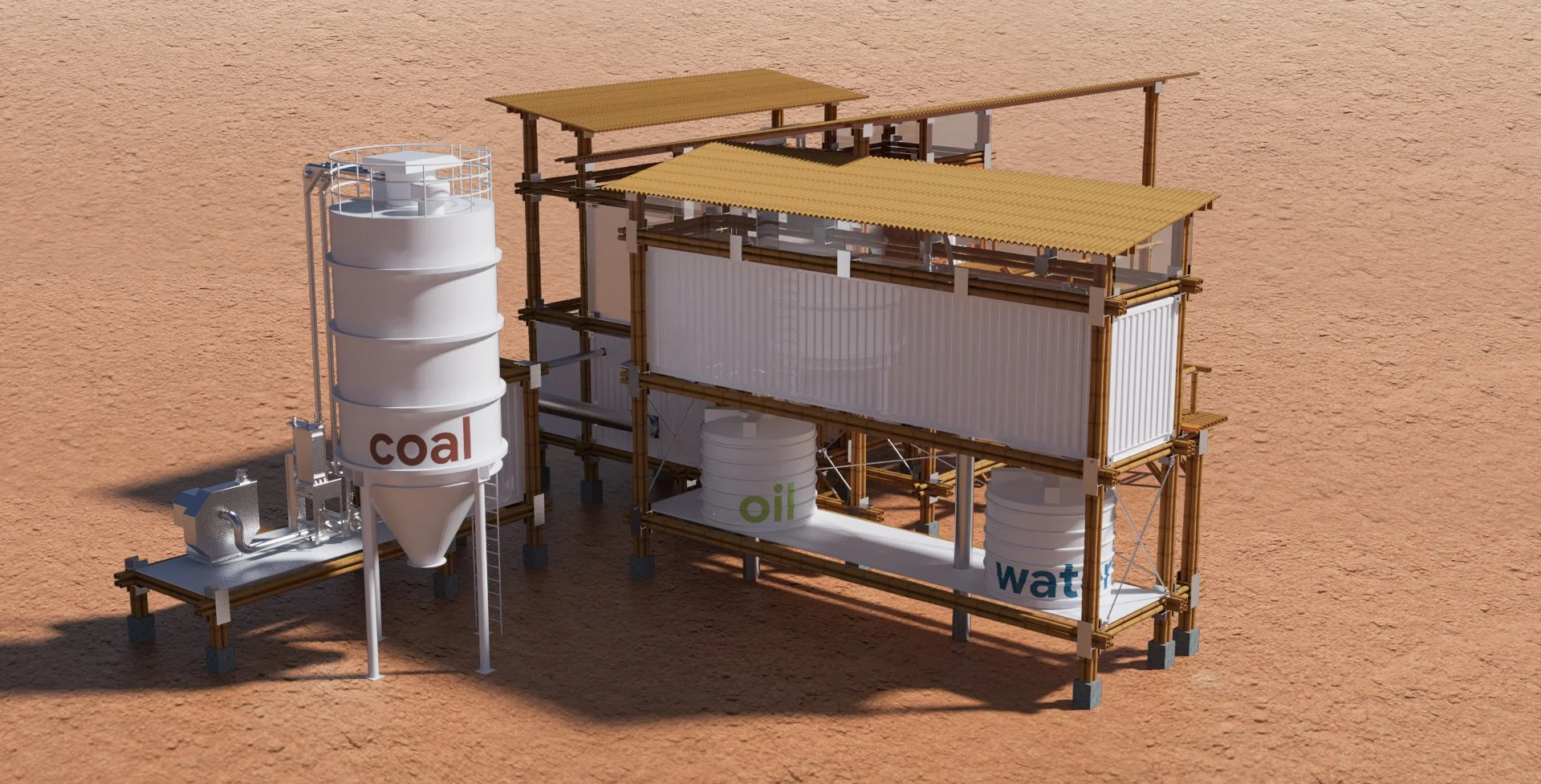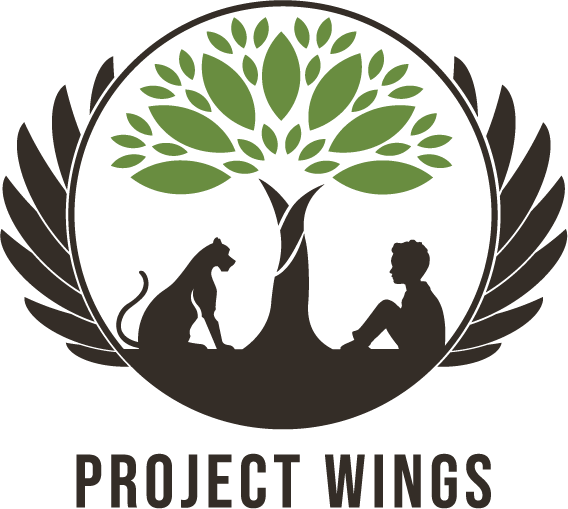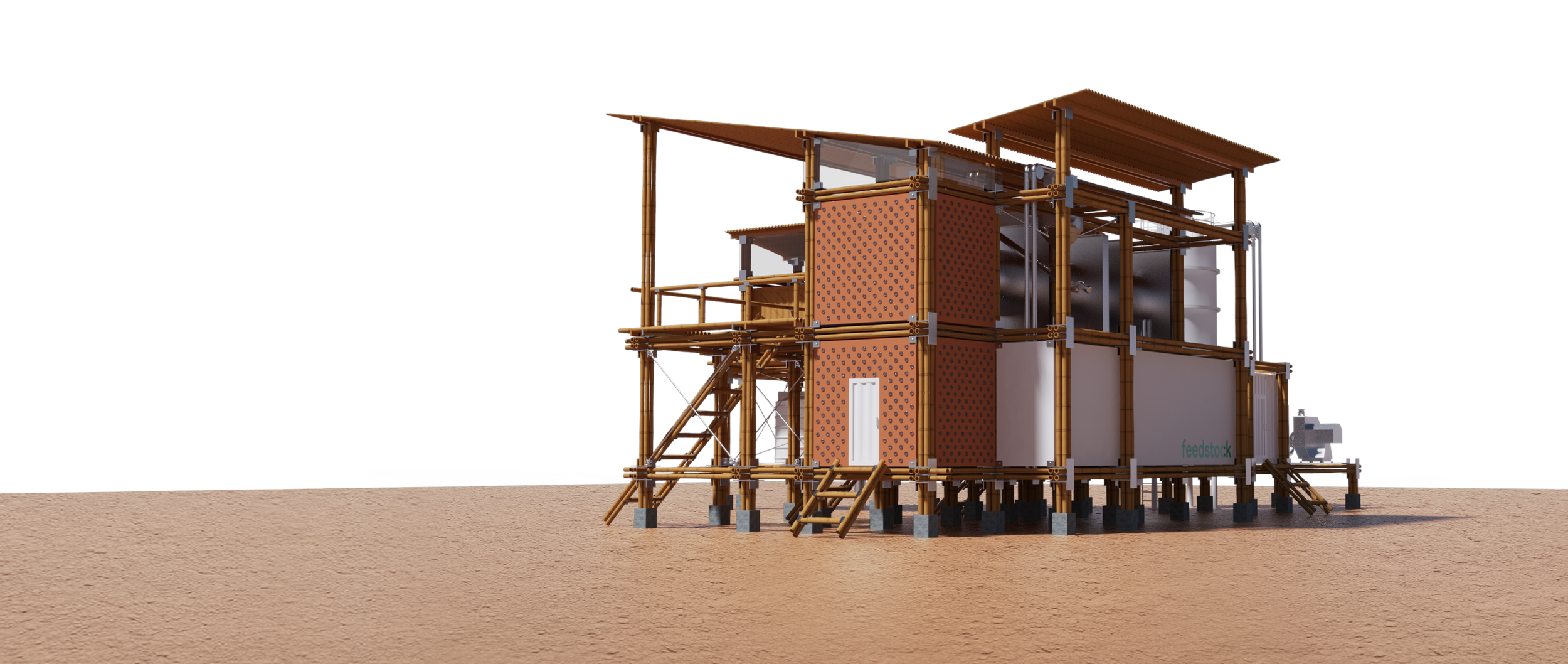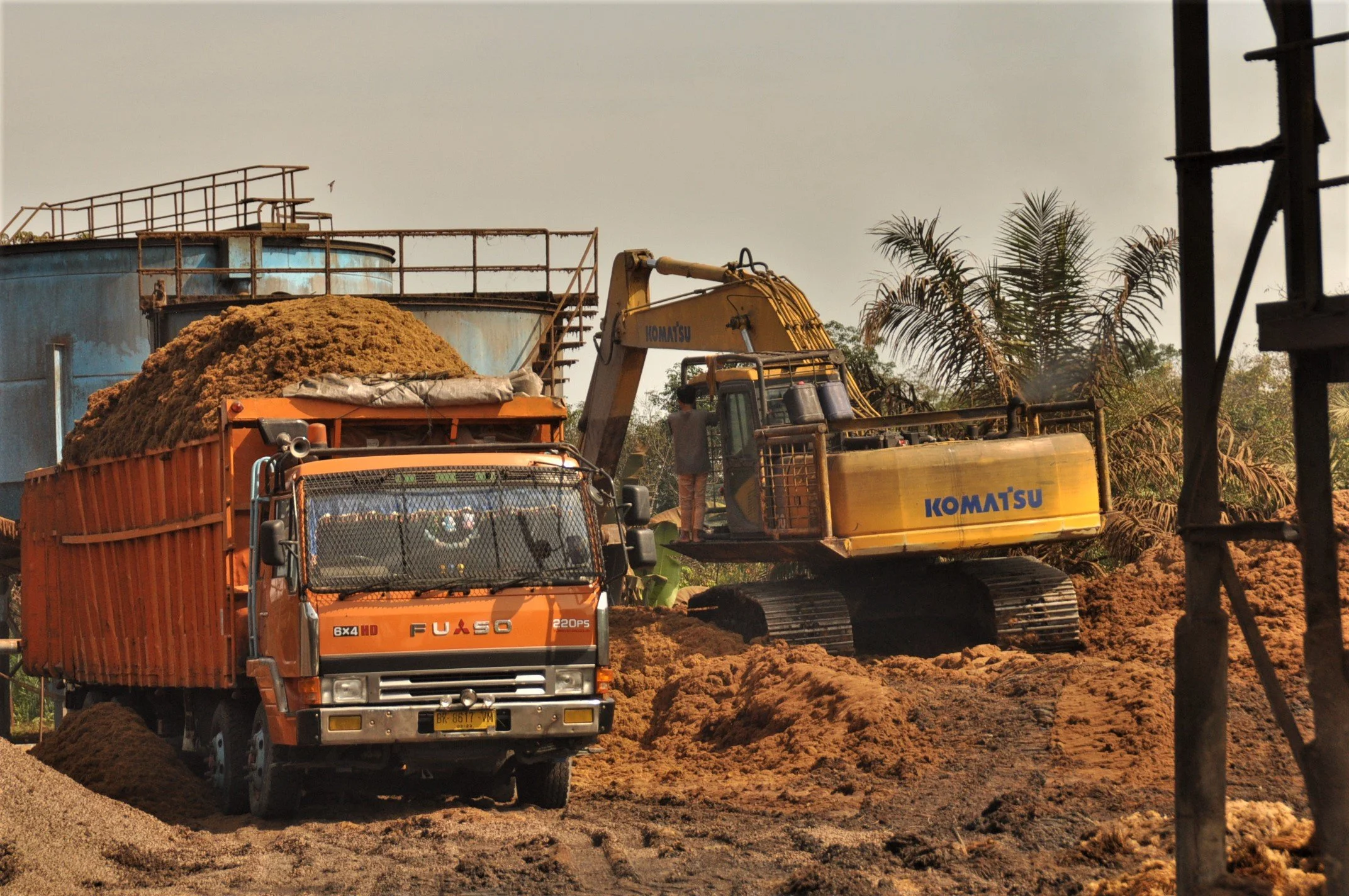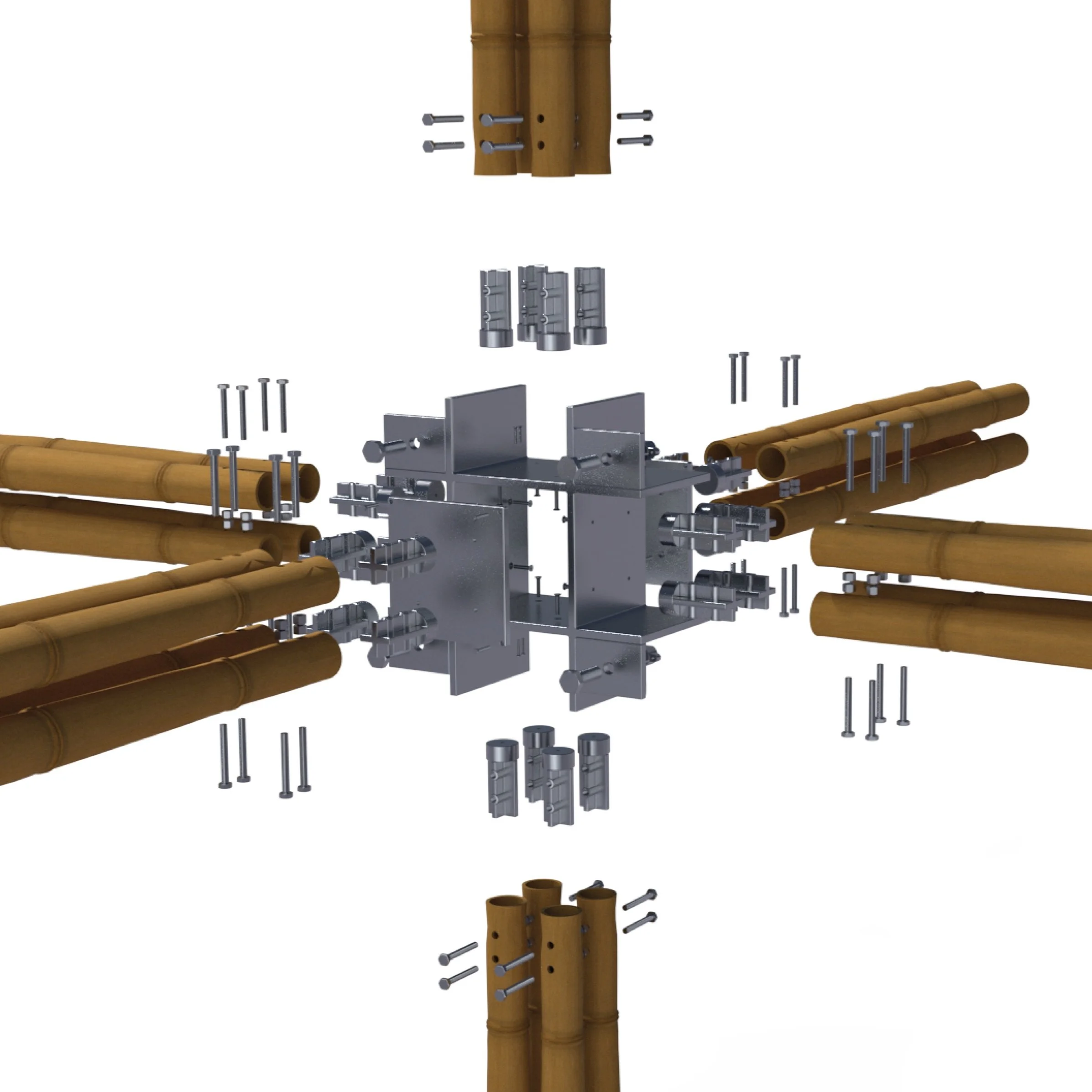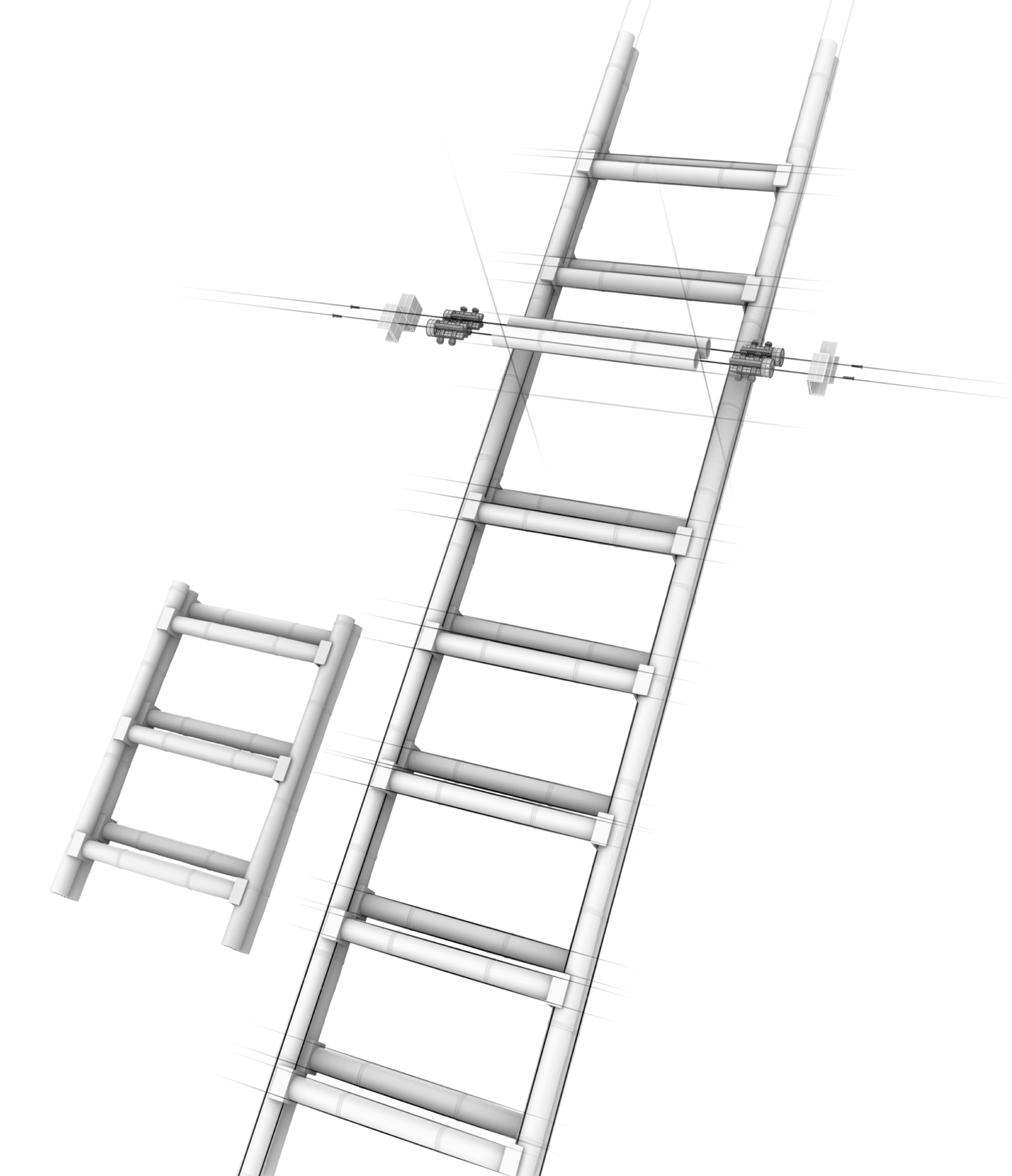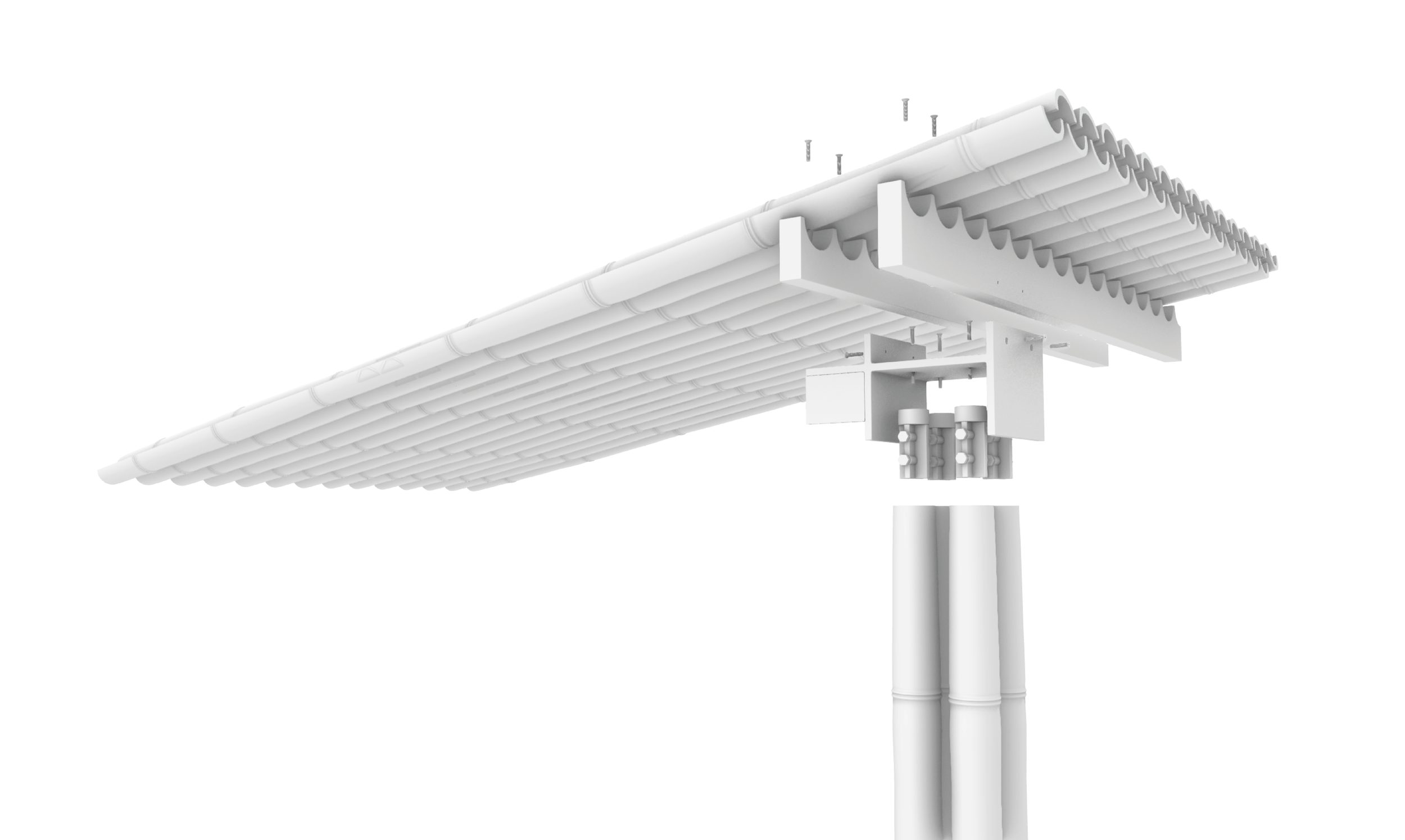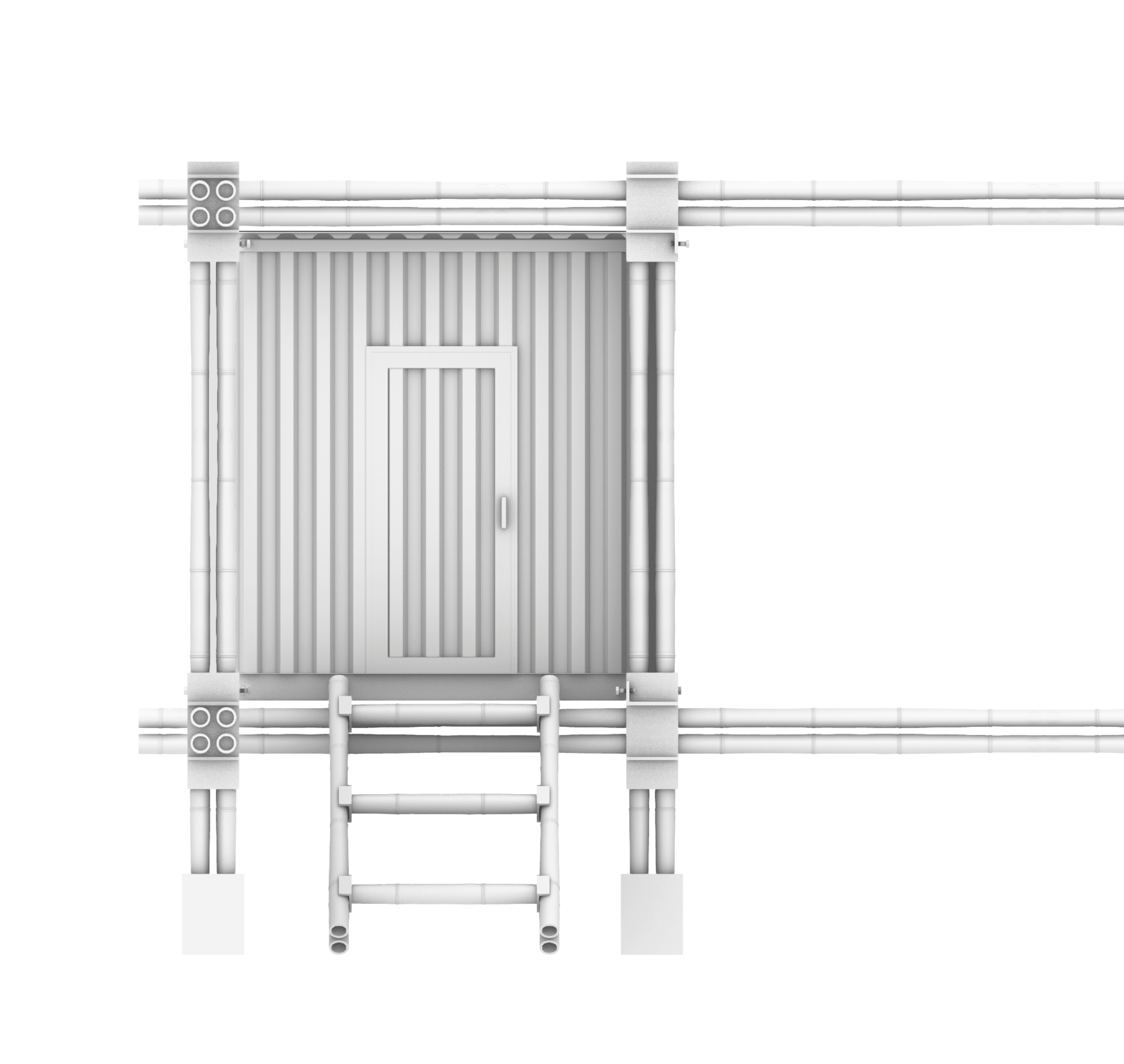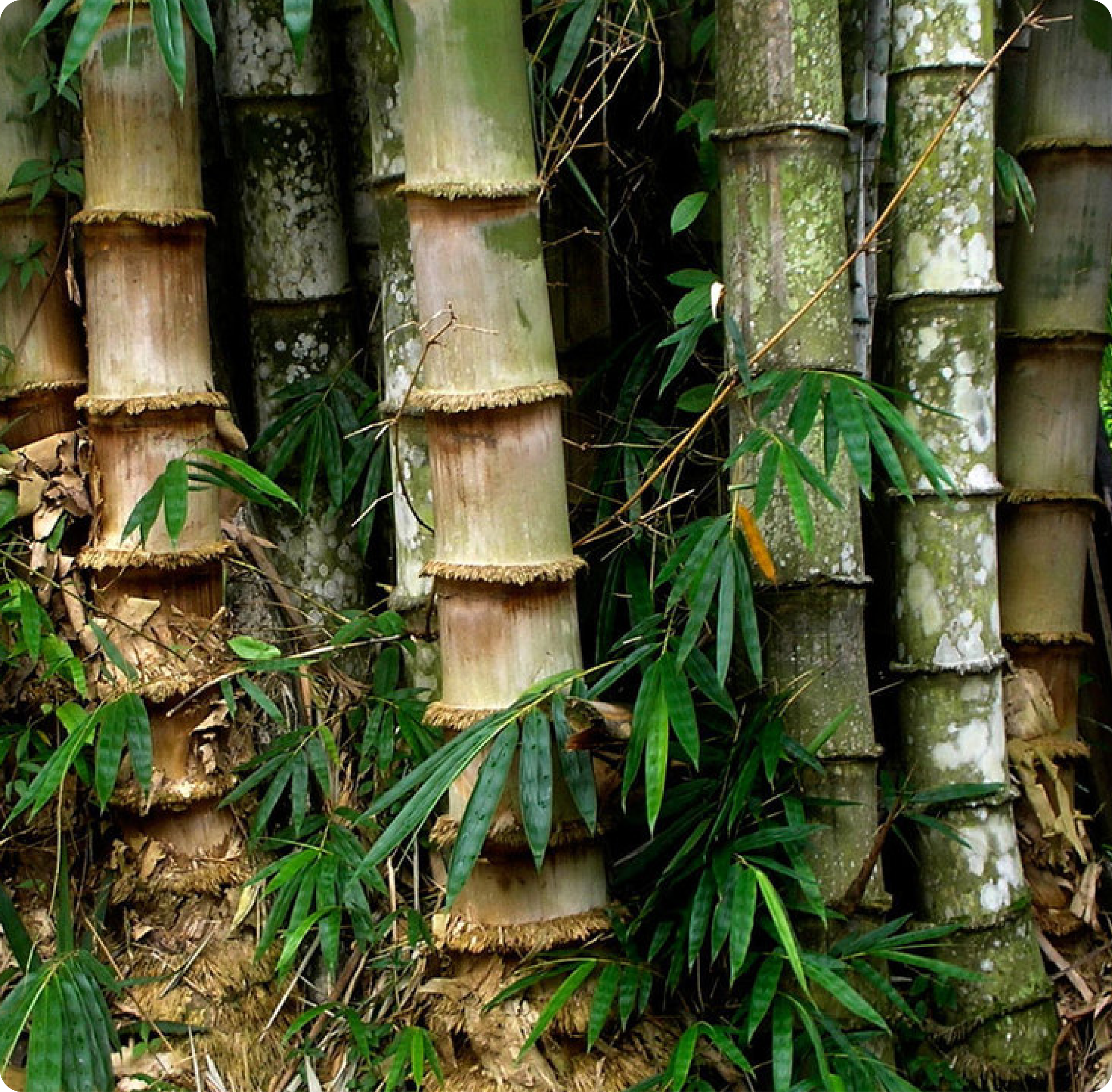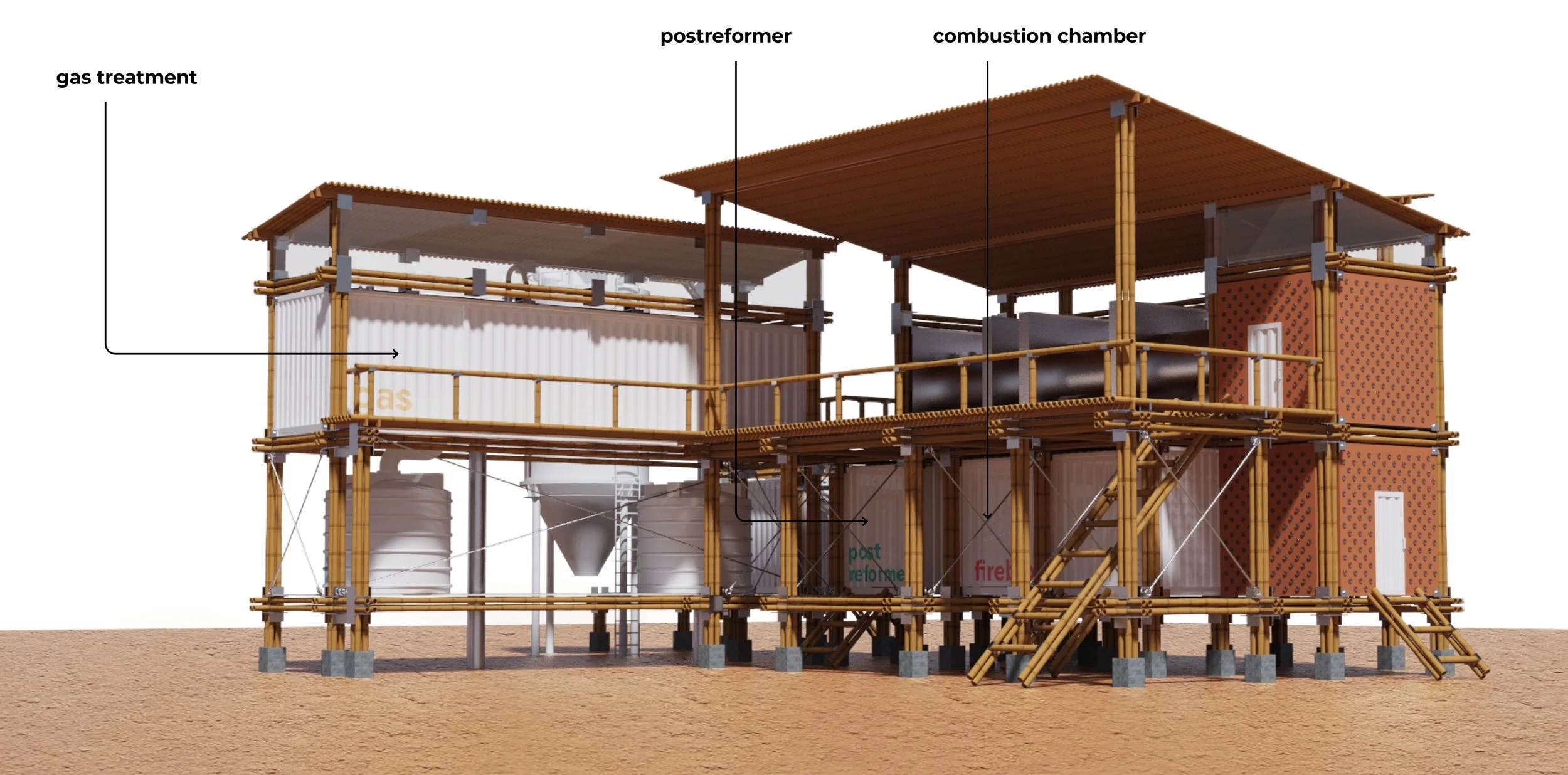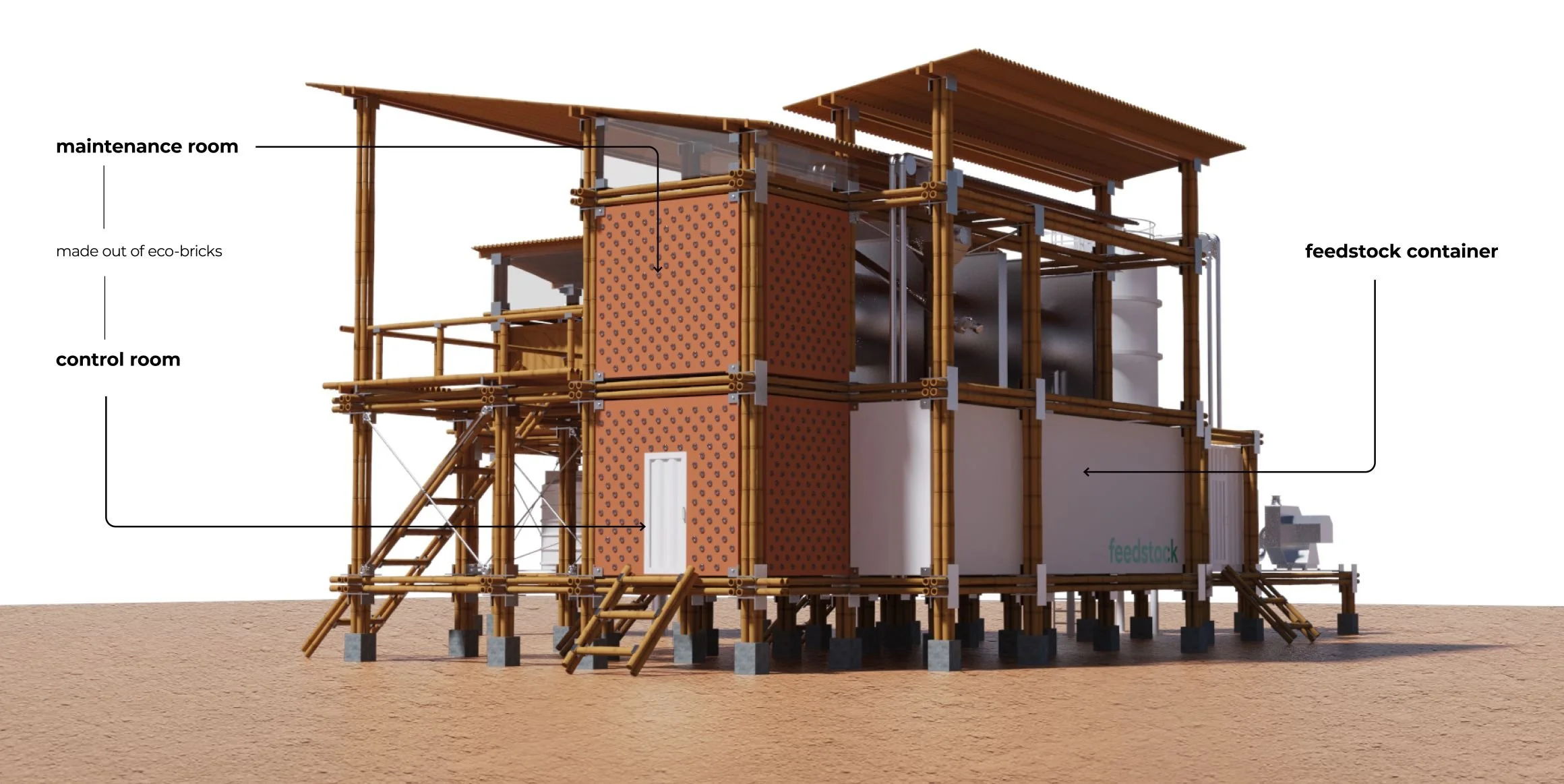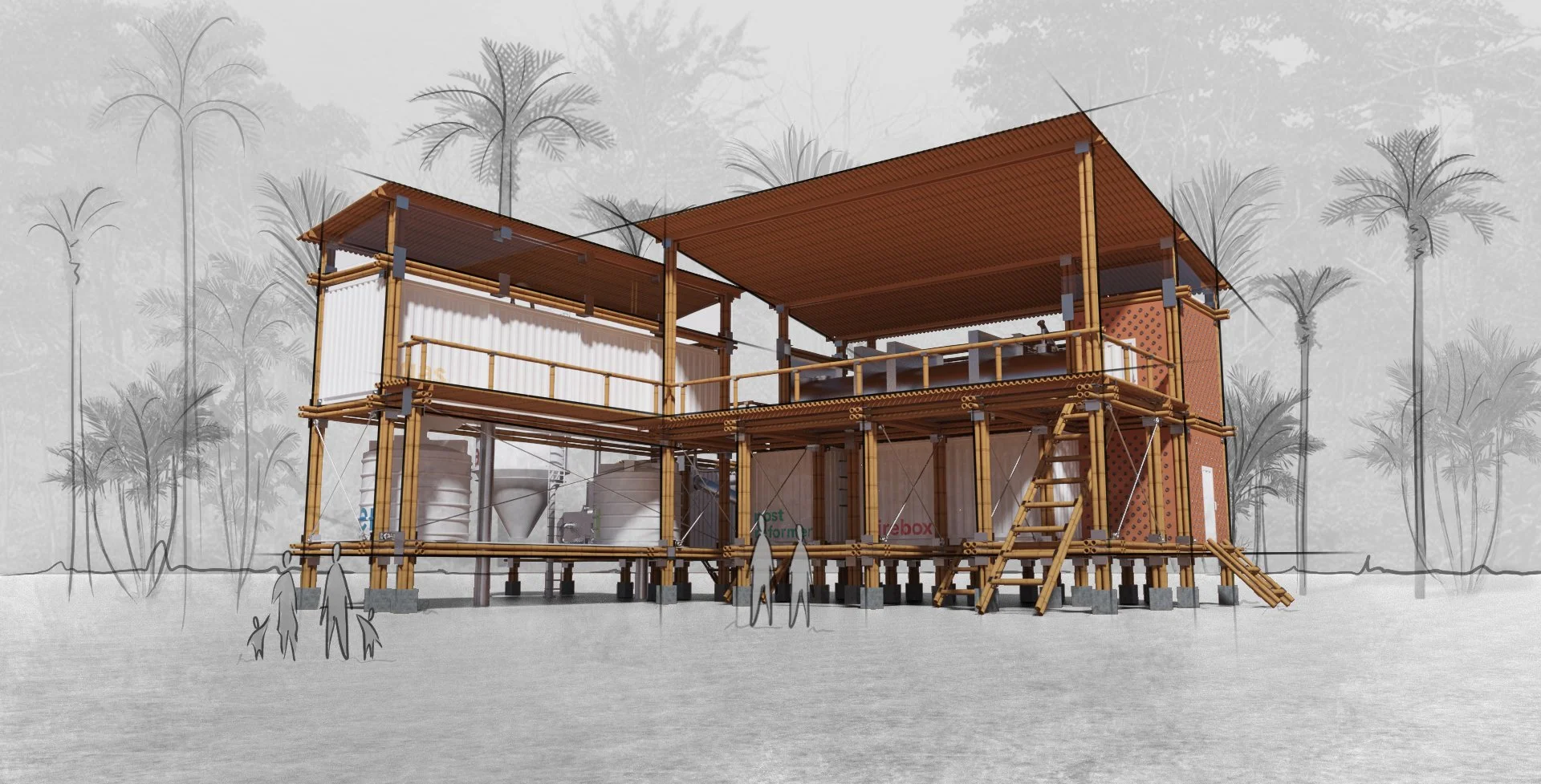Turning Waste into Resources
In collaboration with Fraunhofer UMSICHT we designed a sustainable plant system for their new Thermo-catalytic Reforming Technology (TCR). The concept was developed to become part of a recycling village, that the NGO Project Wings is currently building on Sumatra.
THE PROJECT
TCR-Technology
TCR technology turns biomass into valuable resources. The process is carbon neutral and holds great opportunities for reducing CO2 emitting biomass in palm oil and rice production. It was our task to develop a scenario as well as a structural design for the machine parts.
THE TASK
Part of the Recycling Village
The TCR-system will be part of the recycling village Project Wings is building in Bukhit Lawang, Indonesia. The village is mainly built from bamboo and ecobricks. Project Wings established a waste managment and education system with locals.
SCENARIO
Production Waste
Palm oil farms’ biomass is polluting the area around the recycling village and causing a rise in CO2 emissions. The waste can be processed with the TCR-Technology until palm oil plants are being removed from the area gradually.
SCENARIO
Construction
The system is built as a modular bamboo structure, while the technical components are stored in sea containers. Everything is connected with a knot element.
CONCEPT
Material Sustainability
The bamboo structure is built modular around discarded ship containers. The points of human interaction are built out of ecobricks. The main materials are already used by the recycling village and readily available.
THE VISION
System Layout
The process stages are located in different areas and machine parts are separated in containers. To provide easy access the back of the structure is used for the feedstock input and the resource output. The terrace can be used as a social meeting area for the community in the recycling village.
THE VISION
In addition to my role as a designer, I further managed the cooperation between Project Wings and our project partner the Fraunhofer Institute. The project gave me the opportunity to take responsibility for communication between the different parties and further improve my crosslink competencies as a designer. Exploring solutions that combine both parties’ interests and work for the local communities was a challenging but fun experience.
View the presentation here →
View the whole process here →
2021 - 5 months
Partner:
Alicia Kastner-Pöhlmann
